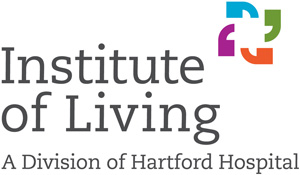Adriana Di Martino, M.D.1, F. Xavier Castellanos, M.D.1,2, Michael P. Milham, M.D., Ph.D.2,3, Clare Kelly, Ph.D. 1
- Phyllis Green and Randolph Co̅wen Institute for Pediatric Neuroscience at the Child Study Center, New York University Langone Medical Center, New York, NY, USA
- Nathan Kline Institute for Psychiatric Research, Orangeburg, NY, USA
- Center for the Developing Brain, Child Mind Institute, New York, NY, USA
We are profoundly grateful to the children, their parents and the adults who participated in our research studies. We further acknowledge the research assistants, postdoctoral fellows, clinical evaluators, interns, and medical students who helped in one or more aspects of the research including recruitment, data collection, data entry, data-basing, and helpful discussions. They are listed alphabetically as follows:
Nicoletta Adamo, M.D.; Samantha Adelsberg, B.A.; Jonathan Adelstein, M.D.; David Anderson, Ph.D.; Samantha Ashinoff, B.S.; Saroja Bangaru, B.S.; Emily Becker-Wideman, Ph.D.; Emily Brady, B.S.; Samuele Cortese, M.D., Ph.D.; Christine Cox, Ph.D.; Camille Chabernaud, Ph.D.; Rachel Chizkov, B.A.; Alexandra Degeorge, Psy.D.; Erin Denio, B.A.; Virginia DeSanctis Ph.D.; Manuel Garcia-Garcia, Ph.D.; Dylan Gee, B.A.; Kristin Gotimer, B.A.; Rebecca Grzadzinski, B.A.; Chiara Fontani, M.A.; Zoe Hyde, M.A.; Carolyn Kessler, Ph.D.; Maki Koyama, Ph.D.; Rebecca Lange, B.A.; Dana Levy, Ph.D.; Brett Lullo, B.S.; Abigail Mengers, B.A.; Maarten Mennes, Ph.D.; Daniel Margulies, Phil.D.; Andrea McLaughlin, Ph.D.; Kritika Nayar, B.S.; Matthew O'Neale; Natan Porter; Jennifer Rodman, Ph.D.; Elizabeth Roberts, Ph.D.; Amy K. Roy, Ph.D.; Ariel Schvarcz, B.S.; David Gutman, M.D.; Devika Jutagir, B.A.; Sharad Sikka, M.S.; Douglas Slaughter, B.S.; Jessica Raithel, B.A.; Jessica Sunshine, B.A.; Leila Sadeghi, M.D.; Zarrar Shehzad, B.A.; Xi-Nian Zuo, Ph.D.
- NIH (K23MH087770; R21MH084126; R01MH081218; R01HD065282)
- Autism Speaks
- The Stavros Niarchos Foundation
- The Leon Levy Foundation
- An endowment provided by Phyllis Green and Randolph Co̅wen
The following publications included data for some of the typical controls who participated in studies contributing to this repository:
- Imperati D, Colcombe S, Kelly C, Di Martino A, Zhou J, Castellanos FX, et al. (2011): Differential development of human brain white matter tracts. PLoS One. 6:e23437.
- Grzadzinski R, Di Martino A, Brady E, Mairena MA, O'Neale M, Petkova E, et al. (2011): Examining Autistic Traits in Children with ADHD: Does the Autism Spectrum Extend to ADHD? J Autism Dev Disord. 41:1178-1191.
- Chabernaud C, Mennes M, Kelly C, Nooner K, Di Martino A, Castellanos FX, et al. (2012): Dimensional brain-behavior relationships in children with attention-deficit/hyperactivity disorder. Biol Psychiatry. 71:434-442.
- Mennes M, Vega Potler N, Kelly C, Di Martino A, Castellanos FX, Milham MP (2011): Resting state functional connectivity correlates of inhibitory control in children with attention-deficit/hyperactivity disorder. Front Psychiatry. 2:83.
- Koyama MS, Di Martino A, Zuo XN, Kelly C, Mennes M, Jutagir DR, et al. (2011): Resting-state functional connectivity indexes reading competence in children and adults. J Neurosci. 31:8617-8624.
Total: 184 (6.5-39.1 years)
Autism Spectrum Disorders (ASD): 79 (7.1-39.1 years)
(53 Autistic Disorder, 21 Asperger's Disorder, 5 Pervasive Developmental Disorder-Not Otherwise Specified)
Typical Controls (TC): 105 (6.5-31.8 years)
Autism Spectrum Disorders (ASD)
Inclusion as a participant with ASD required a clinician's DSM-IV-TR diagnosis of Autistic Disorder, Asperger's Disorder, or Pervasive Developmental Disorder Not-Otherwise-Specified, which was supported by review of available records, an Autism Diagnostic Observation Schedule1-3, review of the participant's history, and when possible, an Autism Diagnostic Interview-Revised4,5.
To assess psychopathology for differential diagnosis and to determine comorbidity with Axis-I disorders, diagnostic assessments also included: 1) parent interview using the Schedule of Affective Disorders and Schizophrenia for Children-Present and Lifetime Version (KSADS-PL)6 for children (< 17.9 years of age); 2) participant interview using the Structured Clinical Interview for DSM-IV-TR Axis-I Disorders, Non-patient Edition (SCID-I/NP)7 and the Adult ADHD Clinical Diagnostic Scale (ACDS) for adults (>18.0 years of age). Of note, comorbid ADHD in this sample was based on meeting all criteria for ADHD except for criterion E in the DSM-IV-TR, which excludes the co-occurrence of ADHD in the presence of ASD. Current (within 3 months prior to the evaluation) Manic or Depressive episode, Bipolar Disorder, Schizophrenia, or Posttraumatic Stress Disorder were exclusionary.
Note: some of the data corresponding to children with ASD between ages 7 and 13 years included in this dataset have also been shared through NDAR.
Typical Controls (TC)
Inclusion as a TC was first based on the absence of any current Axis-I disorders based on the KSADS-PL administered to each child and his/her parent(s), and based on the SCID-I/NP and ACDS interviews for adults. TC were selected from ongoing studies to group-match the datasets of individuals with ASD on age and sex.
Note: some of the TC children included in this dataset also participated in studies from which data were contributed to the ADHD-200 (http://fcon_1000.projects.nitrc.org/indi/adhd200/) sample. Thus, some level of data overlap may exist for TC (within the age range of 7 to 21 years) between these two repositories.
Assessments and Procedures
Recruitment
Participants were recruited in the New York City and surrounding areas through IRB approved flyers, magazine and web advertisements, parent support groups, referrals form the NYU Child Study Center clinical services, as well as word of mouth. Written informed consent/assent were obtained for all participants in accordance with the NYU-SOM IRB.
Estimated IQ
We obtained estimates of intelligence (total, performance and verbal IQ) using the four subtests of the Wechsler Abbreviated Scale of Intelligence (WASI)8.
Additional Questionnaires/Interviews
We administered standardized questionnaires to further characterize participants with respect to various symptom domains. Specifically, for child participants, parent(s) completed the Social Communication Questionnaire and the Social Responsiveness Scale (SRS)-Child version. For adult participants an informant identified by the participant completed the SRS-Adult version. Additionally, the Vineland Adaptive Behavior Scales-Second Edition (VABS)9, a structured interview used to assess personal and social skills in everyday living, was administered to parents for all children (< 18 years of age). For adult participants, the VABS was administered to an informant (parent, a relative, or a significant other) when available. When an informant who knew the participant well was not available, the participant was administered the VABS. The database specifies whether the VABS was provided by an informant (parent or someone else) or by the participant.
Handedness
We used the 22 item Edinburgh Handedness Inventory10. For each item, participants were asked if they use the right, the left, or both hands to complete a particular task. The sum of the right-hand responses minus the sum of the left hand responses divided by the total number of unilateral responses multiplied by 100 provided a total handedness score ranging from 100 (strongest right handedness) to -100 (strongest left handedness).
Medication Information
Information about past and current treatment was collected both at the initial assessment and again at the day of scan. Participants being treated with stimulants were asked to withhold them for 24 hours prior to the scan, subject to treating physician approval. Current medication status and whether participants were off stimulants on the day of the MRI scan is marked in the database.
Body Mass Index
Body mass index was determined by measuring body weight and height at the initial visit.
Exclusion Criteria Common to all Participants
For all groups, current chronic systemic medical conditions, contraindications to MRI scanning, pregnancy (confirmed by a pregnancy test conducted the day of the scan) and use of antipsychotics were exclusionary.
References
- Gotham K, Pickles A, Lord C. Standardizing ADOS scores for a measure of severity in autism spectrum disorders. J Autism Dev Disord. 2009;39(5):693-705.
- Gotham K, Risi S, Pickles A, Lord C. The Autism Diagnostic Observation Schedule: revised algorithms for improved diagnostic validity. Journal of Autism and Developmental Disorders. 2007;37(4):613-27.
- Lord C, Rutter M, DiLavore PC, Risi S. Autism Diagnostic Observation Schedule. Los Angeles: Western Psychological Service; 1999.
- Lord C, Rutter M, Le Couteur A. Autism Diagnostic Interview-Revised: a revised version of a diagnostic interview for caregivers of individuals with possible pervasive developmental disorders. J Autism Dev Disord. 1994;24(5):659-85.
- Le Couteur A, Lord C, Rutter M. The Autism Diagnostic Interview-Revised (ADI-R). Los Angeles: Western Psychological Services; 2003.
- Kaufman J, Birmaher B, Brent D, Rao U, Flynn C, Moreci P, et al. Schedule for Affective Disorders and Schizophrenia for School-Age Children-Present and Lifetime Version (K-SADS-PL): initial reliability and validity data. J Am Acad Child Adolesc Psychiatry. 1997;36(7):980-8.
- First MB, Spitzer RL, Gibbon M, Williams JB. Structured Clinical Interview for DSM-IV Axis I Disorders - Non-Patient Edition (SCID-I/NP). New York: New York State Psychiatric Institute; 1995.
- Wechsler D. Wechsler Abbreviated Scale of Intelligence (WASI). San Antonio, TX: The Psychological Corporation; 1999.
- Sparrow SS, Cicchetti DV, Balla DA. Vineland-II. Vineland Adaptive Behavior Scales. Minneapolis: Pearson Assessments; 2008.
- Oldfield RC. The assessment and analysis of handedness: the Edinburgh inventory. Neuropsychologia. 1971;9(1):97-113.
MRI Scan Preparation
Prior to scans, participants were showed pictures of the MRI scan and were described the MRI procedures and experience as well as given the chance to ask questions and elaborate. Additionally, all children completed at least one mock scan session prior to the scan.
MRI Scanning
MRI scans, acquired using a 3 Tesla Allegra, were conducted in a separate visit following the diagnostic assessment (typically within 3 months). Children taking psychostimulants were asked to withhold the medication at least 24 hours prior to the scan, subject to treating physician approval. During the resting state fMRI scan, most participants were asked to relax with their eyes open, while a white cross-hair against a black background was projected on a screen. However, data were also included for some individuals who were asked to keep their eyes closed; in a few cases, participants closed their eyes regardless of instructions to maintain them open. Eye status during the MRI scan was monitored via an eye tracker and is detailed for each participant.
Data Quality Control
All high resolution and EPI images were internally reviewed for quality control by research staff members. As datasets with a wide range of image quality are being shared, only the most extreme cases of movement were excluded from this sample.

















